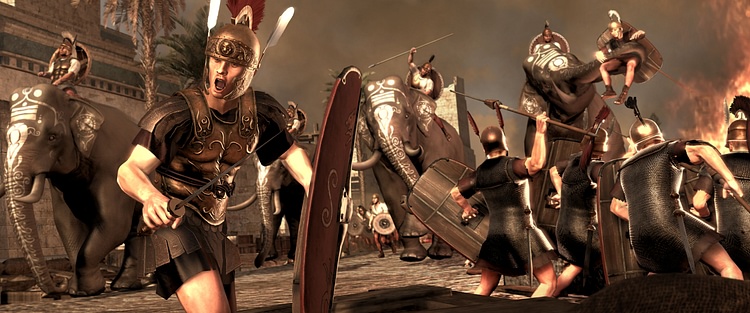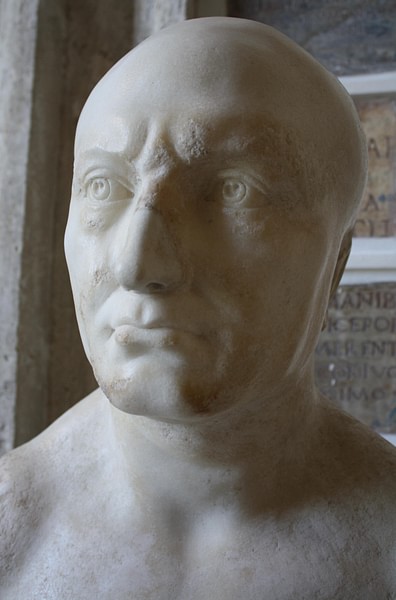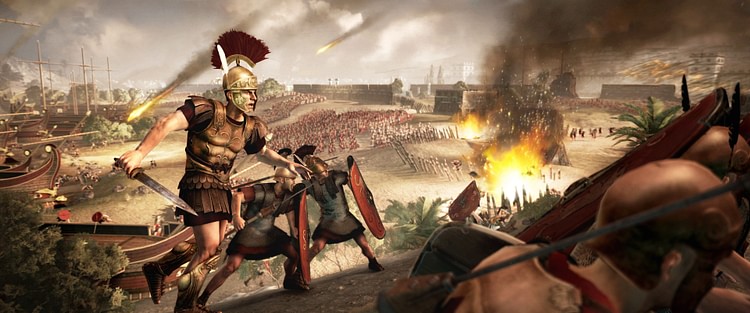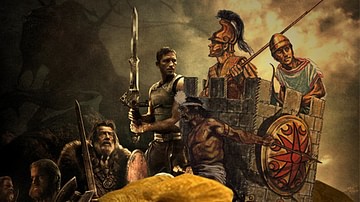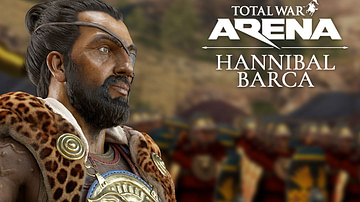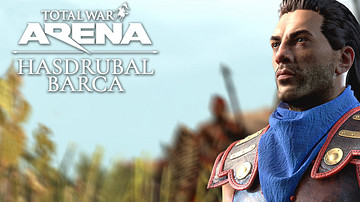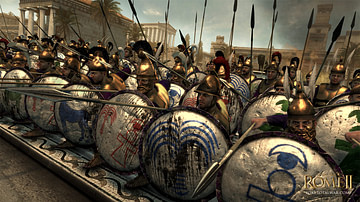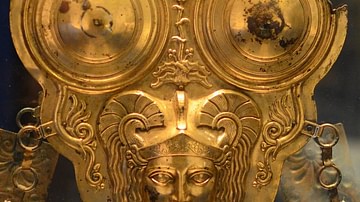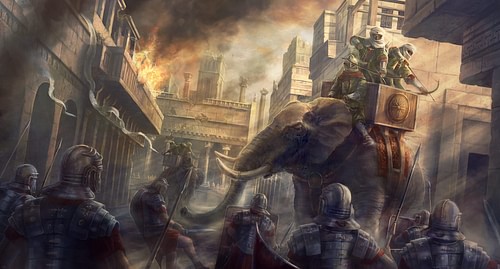
The Second Punic War (The Hannibalic War) was fought between Carthage and Rome between 218 and 201 BCE. The war involved confrontations in Spain, Italy, Sicily, Sardinia, and North Africa. Hannibal led the Carthaginians, one of the most gifted commanders in history, but the Romans had their own great general Scipio Africanus, and he successfully attacked Carthage on home soil.
Carthage had lost the First Punic War and now the Second but they would briefly rise again for a Third Punic War 50 years later. However, another defeat meant its position as a great Mediterranean power was now lost forever.
Causes of the War - Spain
Following the terms of surrender in 241 BCE, Carthage, having lost the longest war in ancient history up to that point, agreed to withdraw from Sicily and pay reparations to Rome of 3,200 talents. The First Punic War had been tremendously costly to both sides but Rome's seemingly inexhaustible resources, especially its capacity to renew large naval fleets meant that, ultimately, Carthage could not compete with the Mediterranean's newest superpower. The Romans took over the Carthaginian mantle as the rulers of the seas and so, if Carthage were to wrest control back from its arch-enemy, it would have to fight on land, and that required money, lots of it.
Before Carthage could think about Rome, it first had to deal with the continued unrest closer to home. In the so-called Truceless War (also Mercenary War) between 241 and 237 BCE, Carthage had to put down a joint rebellion of mercenary troops, understandably upset at not having been paid for their efforts in the first Punic War, Libyan groups, and several cities such as Tunis and Utica. Hamilcar Barca was recalled from Sicily and he joined Hanno the Great, who had recently made significant conquests in Libya, to quash the rebellion. Meanwhile, Rome seized control of Sardinia which had been Carthage's most important source of grain.
Without a significant fleet and having lost their strategically important fortresses in Sicily, Corsica and Sardinia, the Carthaginians had to look elsewhere for a source of money to fund their armies. The answer was Spain. They had long since had control of the old Phoenician colonies there, and it had already proven a rich source of silver. Accordingly, Hamilcar Barca was despatched in 237 BCE to expand Carthaginian territory, which he did, establishing his base at Gades (Cadiz) and founding a new city of Acra Leuce. He supplemented his own force with local recruits and amassed a 50,000-strong army with a corps of 100 elephants. Tribute in money if not men was extracted from local cities and new silver mines were worked.
Hasdrubal the Fair took over from Hamilcar Barca following his death by drowning in 229 BCE and added another 10,000 infantry to his force and 8,000 cavalry, while his war elephants also doubled to 200. By now Carthage controlled half of the Iberian Peninsula. Then in 221 BCE a new face arrived on the scene: Hannibal, eldest son of Hamilcar Barca. Hannibal's father had made his son swear never to be a friend of Rome, and with this solid platform of wealth and arms, he did not disappoint for the commander, still only 26, would become Rome's greatest ever foe.
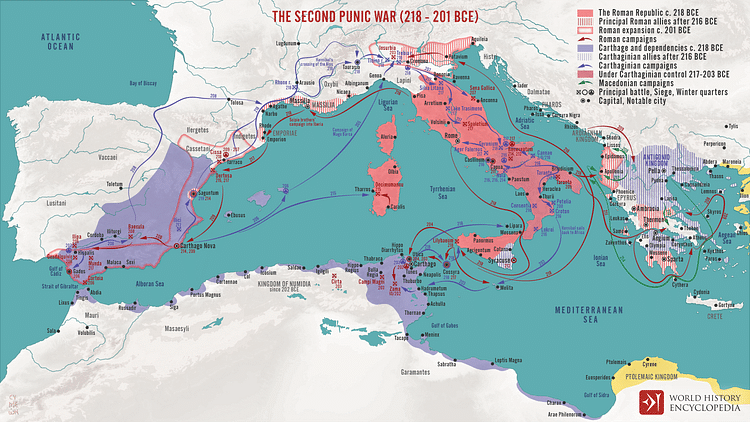
In 226 BCE Hasdrubal had signed an agreement with Rome, concerned at Carthage's expanding empire, not to cross the River Ebro in southern Spain, but Hannibal, now in overall command in Spain, was more ambitious. He invaded ever deeper inland and then besieged and conquered Saguntum (modern Sagunto, just north of Valencia), a long-time ally of Rome, in 219 BCE. This action had the consent of the Carthaginian government but it would prove one move too far for the Romans who, having by now dealt with the troublesome northern Gauls and Illyria, demanded Hannibal be handed over for suitable punishment. Carthage declined and Rome declared war in March 218 BCE. The Second Punic War was underway.
Hannibal Crosses the Alps - Cannae
Hannibal expected Rome to attack his position in Spain and, indeed, a Roman army was sent there with 60 quinqueremes under the command of P. Cornelius Scipio while another one sailed for Sicily. The Romans, though, had missed a trick. Hannibal surprised them by deciding to invade Italy. The First Punic War had shown that Rome could not be defeated from the outside, but perhaps fighting in its own territory and stirring up rebellions, it might be defeated from within.
Accordingly, Hannibal left Hasdrubal Barca (son of Hamilcar Barca) in charge of things in Spain and audaciously crossed the Alps in 15 days. The expedition was not without cost. The difficult journey lost him a significant portion of his army but the losses were more to do with fighting hostile Gallic tribes and desertions than the elements. He had set off with 90,000 soldiers and 12,000 cavalry, and on arrival he had at his disposal only 20,000 men and half his original cavalry. These were supplemented with sympathetic Gauls from northern Italy and the Carthaginian pressed on regardless.
Hannibal established his reputation for near invincibility when he won a battle at the Ticinus (Ticino) river near Pavia and again at the Trebia River in December 218 BCE. Another victory came near Lake Trasimene in June 217 BCE where 15,000 Romans were killed and 10,000 captured. Hannibal once again released Italian prisoners but dealt harshly with Roman captives to emphasise he was at war with only the latter and local communities were welcome to join him.
After three bad losses worse was to follow for Rome in August 216 BCE when Hannibal, moving into southern Italy, won a great victory against a much larger opposing army (80,000 men) at Cannae in Apulia (modern Puglia) in the heel of the Italian peninsula. In typical fashion, the Carthaginian general used the terrain to his advantage, this time putting his 50,000 troops close to the River Aufidus; he constrained the eight legions of the enemy to do likewise and thus restricted their possibility of manoeuvre and gain advantage from their greater numbers. Hannibal had employed his customary tactics of high mobility in the field too and enveloped the enemy while his cavalry attacked the rear. 50,000 of the enemy were killed compared to 5,700 on Carthaginian side, most of those being Gauls. Hannibal seemed unstoppable.
The result of this spectacular campaign was that most of the city-states of southern Italy defected to the Carthaginian cause, including Italy's second most important city, Capua. However, all the Latin colonies and central Italy remained loyal to Rome and this meant that Hannibal's new acquisitions had to be constantly defended. The expected break-up of Rome's hegemony and a mass Gaul uprising did not happen. Neither could Hasdrubal support him from Spain nor Carthage by sea. Rome was reeling but Hannibal was on his own, and he fatefully decided not to attack Rome itself. This may have been because he lacked outside support but also because it was probably never his intention to annihilate Rome. Rather, his campaigns in Italy sought to compel Rome to recognise Carthage's claim on its empire.
Realising they were up against one of history's greatest commanders, Rome changed tactics and adopted a policy of avoiding Hannibal in direct battle, instead fighting only his allies. This was the so-called 'Fabian policy' after Fabius Maximus Verrucosus, the dictator of 217 BCE, who earned the nickname 'Cunctator' (Delayer). Fabius knew that, as at Cannae, Hannibal might win direct confrontations, but he could be worn down by blocking his supplies by sea and entrapping him in Italy. Hannibal desperately tried to conquer a port city, notably Neapolis (Naples) and Tarentum (Taranto), but all attempts failed, as did repeated attacks on Nola. Hannibal had defeated several large Roman armies, but Rome itself, as in the First Punic War, seemed immune to the losses.
Rome Resurgent
Rome, despite having a dangerous enemy on its doorstep, was tenacious if nothing else and rejected all offers of a peace deal. A Roman army was then defeated in Gaul in 216 BCE, but their fortunes slowly began to improve. An army of 13,500 men and corps of elephants were redirected by Carthage to Spain instead of Hannibal in Italy. A similar sized army was sent in an unsuccessful attempt to take Sardinia back for Carthage. Two strategic mistakes which would be regretted by the Carthaginians. Both Syracuse and Tarentum defected to Carthage in 214 and 212 BCE respectively, but Hannibal was being left without support in Italy. The Carthaginian general was faced with the problem that he simply did not have the manpower to keep control of all his newly acquired territory. Wherever Hannibal was not, the Romans would attack.
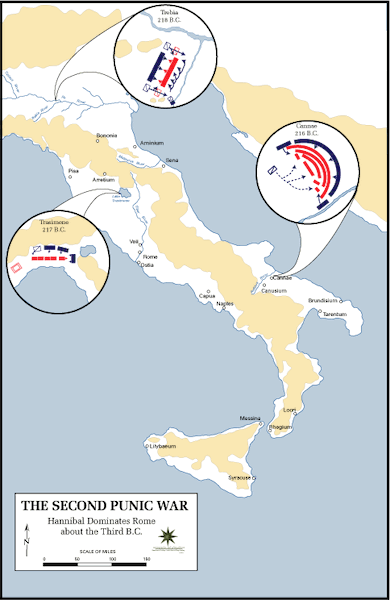
In 212-211 BCE, when Capua was besieged by six Roman legions, Hannibal tried to make them withdraw by feigning a march on Rome, but the ruse failed. The strategy of Fabius, although interrupted occasionally by zealous commanders eager for glory in their one year of office as consul, was slowly working and, relentlessly, the Romans backed Hannibal into an ever-smaller pocket so that by 207 BCE he controlled only Bruttium. Rome might have feared a land battle but they were still masters of the seas, and this meant that Hannibal could not be resupplied. The clock was ticking and Rome had time on their side.
The War Expands
Meanwhile, the war was widening. In 215 BCE Rome attacked southern Spain, dramatically defeating Hasdrubal at the battle of Ibera in 215 BCE. Saguntum was retaken but both Roman commanders, P. Cornelius Scipio and Gn. Cornelius Scipio Calvus were killed and their armies seriously defeated in the Tader valley in 211 BCE. Their replacement in Spain was the proconsul Publius Cornelius Scipio whose later exploits would allow him to add an 'Africanus' to his name. The 25-year old general sailed from Ostia and quickly made his mark on the war by a shock capture of the main Carthaginian supply base and treasury in Spain, Carthago Nova (modern Cartagena) in 209 BCE. The Iberians now gave up the Carthaginian cause and Rome had access to the enemy's silver mines to boost its war effort.
On Sicily, the Carthaginians lost their useful ally, Syracuse. Carthage sent an army of 23,000 to the island in 213 BCE but could not prevent the city falling into the hands of Marcus Claudius Marcellus, a veteran of the First Punic War, in 212 BCE. Rome then could establish firm control over the island by 210 BCE. Marcellus shipped large amounts of Greek art back to Rome in a novel method of impressing the populace with his success. Macedon too was brought into the war. Under Philip V, the Macedonians proved no match for the Roman general Marcus Valerius Laevinus, and Macedon was forced out of the Adriatic and into a war with the Aetolian Confederacy in north-west Greece.
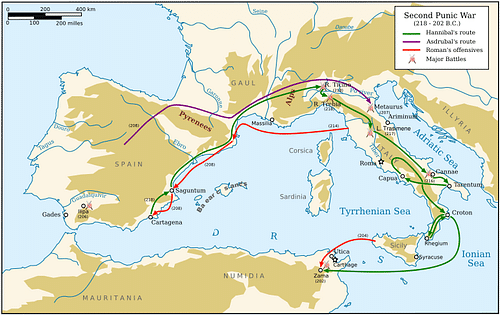
Back in Spain, Scipio Africanus was gaining local allies, and he defeated a Carthaginian army led by Hasdrubal at Baecula in 208 BCE. Hasdrubal escaped to Italy but the remains of his army were defeated at the Metaurus River the following year. Scipio preferred to focus on Spain and won another victory, again against a more numerous opponent, at Ilipa in 206 BCE. Spain, the original flashpoint of the war, was now cleared of Carthaginian forces. Scipio then made allies of two Numidian princes, Syphax and Masinissa, in preparation for his plan to take the war to Africa. Syphax would later defect to the Carthaginians, and the Roman Senate was initially against an invasion, but eventually Scipio got his backing and was ready to strike at the soft underbelly of the Carthaginian held territories in Africa, just as Hannibal was doing in southern Italy.
At the same time in Italy, Hannibal was still holding out despite facing armies twice the size of his own force. Carthage sent an army to Liguria in northern Italy in 205 BCE. Led by Mago, Hannibal's brother, the 14,000-strong force suffered from an inability to land closer to Hannibal's army because of Roman naval dominance and their control of the major ports. Almost inevitably, Mago was unable to join forces with Hannibal and his army was defeated in Cisalpine Gaul in 203 BCE. The theatres of war in Spain, Sicily, and Italy were now almost played out and attention turned to Africa.
Scipio Africanus Attacks Africa
In 205 BCE, after being appointed consul, Scipio crossed the Mediterranean to Sicily and strengthened his army. Then, in 204 BCE, with a force of around 30,000 men and 440 ships, he crossed to North Africa in three days. Scipio immediately defeated a contingent of 500 Carthaginian cavalry and then had his army boosted by the arrival of Masinissa's Numidian cavalry. There followed another quick victory against a 4,000-strong Carthaginian cavalry force.
When Scipio attacked Utica, the city proved more resilient than expected, and Carthage, meanwhile, assembled an army under Gisgo, son of Hasdrubal. This force consisted of 30,000 infantry and 3,000 cavalry, and Gisgo was almost immediately joined by the Numidian Syphax with his army of 50,000 infantry and 10,000 cavalry. This huge force moved towards Utica to relieve the siege in 203 BCE. The two sides did not clash, rather, each established a camp to see out the winter. After a period of hesitant peace negotiations, which may only have been offered for Scipio to gain intelligence on the enemy positions, the Roman general divided his force in two and attacked the camps of Syphax and Gisgo at night. The raids were hugely successful and devastated the enemy.
With reinforcements coming from an army led by Hasdrubal, the Carthaginians and their Numidian allies managed to muster another army of 30,000 infantry. Scipio marched to meet them, and after three days of merely observing each other, the battle commenced. Scipio's cavalry wings crushed the enemy and the African infantry collapsed. After Scipio sent a force to establish Masinissa on the throne and capture Syphax, the Numidian threat was removed. In addition, Scipio had conquered Tunis. These defeats now put the city of Carthage itself in danger and necessitated the return of Hannibal from Italy to defend the homeland. Carthage made overtures for peace in 203 BCE, perhaps only to allow Hannibal time to come back home as indicated by their treatment of a Roman transport fleet blown off course in 202 BCE. In the summer of 202 BCE, the war was very much back on again and the two sides would clash in one final decisive battle. For Carthage it would be the very last throw of the dice.
Zama & Victory
In October 202 BCE, the armies of Hannibal and Scipio met on a plain in western Tunisia near Naraggara. The two commanders actually met in person in a conference where Hannibal perhaps requested a peace settlement but Scipio was probably keen to end the long war with a showpiece battle and earn himself a triumph back in Rome. The battle is referred to as 'the battle of Zama' because that town was on Hannibal's route to the battlefield. Scipio fielded 30,000 infantry and 5,500 cavalry, which included 6,000 infantry and 4,000 cavalry from Masinissa. Hannibal's mix of Italian veterans and new recruits numbered some 45,000 men and included 2,000 Numidian cavalry from their ally Tychaeus.
Hannibal's troops fought well, especially the veterans placed in the rear line of three, but the 80 Carthaginian war elephants were easily dealt with by Scipio, who had placed his legionaries so as to create channels which allowed the animals to pass through when they charged. They were then herded back in the direction of the Carthaginians to cause havoc there. The Roman and Numidian cavalry then hit Hannibal's forces in the rear, and victory was theirs. 20,000 Carthaginians had fallen while Rome suffered fewer than 5,000 fatalities.
The Second Punic War was lost and Hannibal sued for peace terms. The Romans insisted on Carthage giving up its entire fleet (except a paltry 10 ships), all elephants, and all Roman prisoners. Further, Carthage could not make war without Rome's permission, had to recognise the territories of the new Numidian king Masinissa, and pay in reparations to Rome the huge sum of 10,000 talents over the next half century. The Romans also took possession of southern Spain.
At the beginning of the war both sides had been roughly equal in fighting forces on land. Rome had a far superior navy, but Carthage had the best commander in Hannibal. Once again, though, Rome's seemingly inexhaustible resources in men, ships, and money, combined with skills on the battlefield and command of the seas, had ensured Rome could replenish losses more easily than Carthage. And, in the final battle at Zama, Scipio had shown what could be achieved by adapting standard tactics to defeat specific enemies. It would be a lesson well-learned and repeated again and again by the Roman army, now well-practised at fighting in multiple theatres simultaneously. Rome, with its greatest enemy crushed, was now, and would remain for centuries, the unchallenged master of the Mediterranean.
